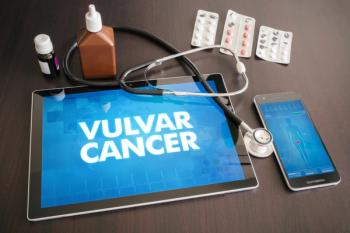
Interpartum Surveillance; Past, Present and Future
Coverage of the 2009 World Congress of Perinatal Medicine
Roberta Speyer: This is Roberta Speyer reporting from the World Congress in Perinatal Medicine 2009 in Berlin, Germany. I am here with Professor Maeda and we are going to discuss the changes over time since the 1960's to current times in the evolution of fetal monitoring.
Professor, you began your work back in the 1960's, what was fetal monitoring like at that time?
Professor Emeritus Kazuo Maeda: Yes, at that time, before you started to record the fetal heart rate and uterine contractions at the same time as always by machine, so by the fetal heart sound, so there's a fetal heart sound dopra signals, but that's a tremor, a fetal heart sound, in the _______ technique. Sometimes internal mess up of the fetal electrocardiogram was common. But it doesn't monitor the patient during pregnancy, only during the delivery.
Roberta Speyer: Okay, only during the delivery. This was when you had the band around the stomach and it would require one machine and one person running the machine and the patient. And it was only recording the baby. It wasn't something that could be used during pregnancy or monitoring the mother. Correct?
Professor Emeritus Kazuo Maeda: During pregnancy also there was everybody. At that time an expert was needed, so that would be an obstetrical physician or a nurse or a midwife, they should very clearly know how to diagnose the CTC record.
Roberta Speyer: So they need to look at it and interpret it.
Professor Emeritus Kazuo Maeda: Continuously.
Roberta Speyer: Continuously, so if the labor goes on for ten hours or 12 hours you need another expert to come in and take over.
Professor Emeritus Kazuo Maeda: It is very difficult to do work by person in very many deliveries.
Roberta Speyer: So now we are going to fast forward, turn of the century, new technology, and new ways of using technology. What is the setting now? Before you had one person who had to be an expert, watching one person who is pregnant or in labor, and if you wanted to have ten people, you had to have ten machines and ten experts. Now what is it like?
Professor Emeritus Kazuo Maeda: If there are thousand deliveries in a year they should appoint 30 deliveries at the same time, so 30 machines and 30 experts in a day and night are necessary.
Roberta Speyer: It's very expensive and probably not even easy to do, to find that many experts all the time.
Professor Emeritus Kazuo Maeda: Almost impossible. So that role would be done by a central computer.
Roberta Speyer: With a centralized computing system how many people are you now able to monitor with one expert?
Professor Emeritus Kazuo Maeda: One expert - so experts' role will be done by the computer. It has a program to download the CTC. The machines divides the signals of 30 people into 30 channels of the computer.
Roberta Speyer: Now you have 30 people able to monitor and the role is not required for the person doing the monitoring to be at quite a high level of expertise because the computer is doing the interpretation. What does it do, set off an alarm or something if there is a problem? If certain levels go, and then you can bring in the expert.
Professor Emeritus Kazuo Maeda: That's a problem should be very correct. We did it from the 1970's until now. There will be an expert's analysis system, also a newer network computer, and the fetal heart rate frequency analysis - the three combined and very correct diagnosis __________.
Roberta Speyer: Your outcomes with this type of data, have you been able to reduce any of the typical problems in labor? What have been your outcomes?
Professor Emeritus Kazuo Maeda: There are results of the diagnosis would be conducted to attending doctors. The method is also very important. My idea is to use the cell phone.
Roberta Speyer: Cell phone! Everyone has one - right?!
Professor Emeritus Kazuo Maeda: Everyone does! So the attending doctor keeps a cell phone; their own cell phone. Then either initiation of the monitoring phone number is registered in the computer, then if any very difficult things appear it should be conducted to the cell phone. It is a very direct way to inform.
Roberta Speyer: They are able to respond right away.
Professor Emeritus Kazuo Maeda: Sometimes it is necessary for some intervention in delivery, including forceps, _______, sometimes a cesarean section.
Roberta Speyer: Cesarean section. Decisions like that can be made. This probably reduces the incidence of things like cerebral palsy.
Professor Emeritus Kazuo Maeda: I think so because in our experience, in a small number of deliveries, there is perinatal mortality of the fetus on the ________ was reduced, especially reduced, and also cerebral palsy reduced to one third. In a hospital it becomes almost zero.
Roberta Speyer: Wow! That's fantastic!
Professor Emeritus Kazuo Maeda: Even the very good effects have zero ________ rate not so much increased, because that is much to the diagnosis. In Japan the average cesarean section rate now will be 12 to 15 percent.
Roberta Speyer: Twelve to 15 percent average C-section rate in Japan, which is much higher in the United States and many other countries. If you are able to monitor correctly with the system then you are able to tell that you do not need to do a c-section, that maybe what you would have observed and thought required one, does not really require one. Is that why it is helping?
Professor Emeritus Kazuo Maeda: Yes. These days obstetric physician has already been reduced and because of some special programs, they need some more simplified monitoring technique. Time needs to be saved for the obstetrician.
Roberta Speyer: We have the same problem in the United States. Less people coming out of, for example, maternal fetal medicine residency programs than are retiring every year. So there are less and less doctors handling more and more deliveries.
It's fascinating. What do you predict in the next 50 years. What do you think when you look ahead and wonder where it is all going to go.
Professor Emeritus Kazuo Maeda: Next is expanding this technique of CTC monitoring into the undeveloped countries.
Roberta Speyer: So you could take the CTC monitoring there?
Professor Emeritus Kazuo Maeda: Present CTC monitoring is a very expert ability, to diagnose the CTC. It needs very long study. For example, obstetric doctors. But in the developing countries, there is a small facility for medicine. But also there is very uneducated deliveries.
Roberta Speyer: No experts almost in some places, or one expert for thousands and thousands of people. They might just be one doctor, not necessarily a perinatologist or an obstetrician, correct?
Because I imagine the size of the equipment and the capabilities are getting smaller and smaller, do you see these being able to be easily portable like a laptop computer or something?
Professor Emeritus Kazuo Maeda: It’s just like that now. Also the patients, perinatal agreement is not necessary to be connected to the machine by wire.
Roberta Speyer: No? How do you connect them?
Professor Emeritus Kazuo Maeda: Telemetry system, the signals for fetal heart rate or the uterine contraction is transmitted to the computer by radio wave.
Roberta Speyer: Really. Is it going by satellite, or...?
Professor Emeritus Kazuo Maeda: The perinatal woman can move, can eat, can get up and go to the toilet.
Roberta Speyer: She can get up and move around. That's good when you are in labor. I had five children, you need to move around.
Professor Emeritus Kazuo Maeda: It is also complete these days.
Roberta Speyer: Do you predict in the future, in the third world countries, that we will be able to get the data from very remote areas and maybe have a perinatologist that is in Europe or in Japan and is able to give advice to people in Africa, sub-Sahara and southeast Asia? That's where it is going eventually?
Professor Emeritus Kazuo Maeda: Perhaps, all perinatal will be monitored in the future, in the old world.
Roberta Speyer: This would be the true answer to the problem and the dilemma of the mother and the fetal death rate in these countries, is the technology to be able to bring that level of care and understanding. You cannot bring all those people down there but if you can bring the machines there.
Professor Emeritus Kazuo Maeda: I am a medical doctor but always interested in the computer and some medical _________ so I always __________ expanding our knowledge to all people.
Roberta Speyer: Well, I think that the world certainly owes you a great deal of credit for what you have done. We all know that you are world famous for your work. You changed fetal monitoring and the face of medicine and so many lives. I look forward to seeing the future and how this technology can be applied to third world countries to improve care for women and their babies all over the world.
Thank you so much for joining us today Professor.
Professor Emeritus Kazuo Maeda: Thank you for the interview.
Newsletter
Get the latest clinical updates, case studies, and expert commentary in obstetric and gynecologic care. Sign up now to stay informed.











